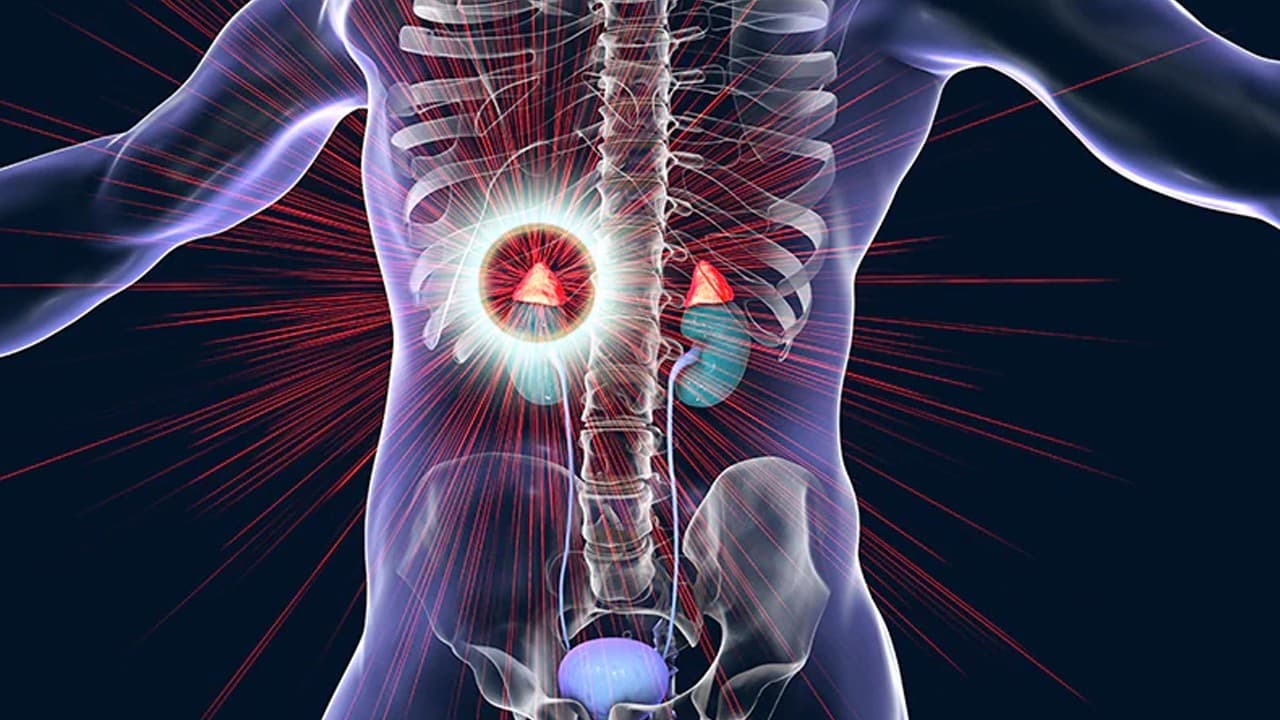
Conn's Syndrome, also known as primary aldosteronism, is a condition where the adrenal glands produce too much aldosterone. This hormone helps control blood pressure by managing sodium and potassium levels. Excess aldosterone can lead to high blood pressure and low potassium levels, causing symptoms like muscle weakness, fatigue, and headaches. Diagnosing Conn's Syndrome often involves blood tests, imaging studies, and sometimes adrenal vein sampling. Treatment options include medications, lifestyle changes, or surgery to remove the overactive adrenal gland. Understanding Conn's Syndrome is crucial for managing its impact on health and improving quality of life.
What is Conn's Syndrome?
Conn's Syndrome, also known as primary hyperaldosteronism, is a condition where the adrenal glands produce too much aldosterone. This hormone helps control blood pressure by managing sodium and potassium levels in the body. Let's dive into some fascinating facts about this condition.
-
Named After Jerome W. Conn
Conn's Syndrome is named after Dr. Jerome W. Conn, who first described the condition in 1955. -
Overproduction of Aldosterone
The hallmark of Conn's Syndrome is the overproduction of aldosterone, which leads to high blood pressure and low potassium levels. -
Adrenal Glands
The adrenal glands, located on top of the kidneys, are responsible for producing aldosterone. -
Common Cause
The most common cause of Conn's Syndrome is a benign tumor in one of the adrenal glands. -
Bilateral Adrenal Hyperplasia
Another cause is bilateral adrenal hyperplasia, where both adrenal glands are enlarged and overactive.
Symptoms of Conn's Syndrome
Recognizing the symptoms of Conn's Syndrome can be tricky since they often resemble other conditions. Here are some key symptoms to watch out for.
-
High Blood Pressure
Persistent high blood pressure, especially if it doesn't respond to standard treatments, can be a sign. -
Low Potassium Levels
Low potassium levels, or hypokalemia, can cause muscle weakness, cramps, and fatigue. -
Frequent Urination
Increased aldosterone can lead to frequent urination and excessive thirst. -
Headaches
Severe headaches are often reported by those with Conn's Syndrome. -
Tingling Sensations
Tingling or numbness in the extremities can occur due to low potassium levels.
Diagnosing Conn's Syndrome
Diagnosing Conn's Syndrome involves several tests to confirm the overproduction of aldosterone and rule out other conditions.
-
Blood Tests
Blood tests measure levels of aldosterone and renin, a hormone that regulates aldosterone production. -
24-Hour Urine Test
A 24-hour urine test can help measure aldosterone levels over a full day. -
CT Scan
A CT scan of the adrenal glands can identify tumors or abnormalities. -
Adrenal Vein Sampling
This specialized test measures aldosterone levels directly from the adrenal veins to pinpoint the source. -
Saline Infusion Test
The saline infusion test helps determine if aldosterone levels remain high despite increased fluid intake.
Treatment Options for Conn's Syndrome
Treatment for Conn's Syndrome aims to normalize aldosterone levels and manage symptoms. Here are some common approaches.
-
Surgery
Surgical removal of the affected adrenal gland can cure the condition in many cases. -
Medications
Medications like spironolactone or eplerenone can block the effects of aldosterone. -
Lifestyle Changes
Reducing salt intake and maintaining a healthy weight can help manage symptoms. -
Regular Monitoring
Regular blood pressure and potassium level checks are essential for managing the condition. -
Combination Therapy
Sometimes a combination of surgery and medication is necessary for optimal results.
Complications of Untreated Conn's Syndrome
Ignoring Conn's Syndrome can lead to serious health issues. Here are some potential complications.
-
Heart Disease
Chronic high blood pressure increases the risk of heart disease and stroke. -
Kidney Damage
Prolonged high blood pressure can damage the kidneys, leading to chronic kidney disease. -
Muscle Weakness
Severe hypokalemia can cause significant muscle weakness and paralysis. -
Metabolic Alkalosis
An imbalance in blood pH levels, known as metabolic alkalosis, can occur due to low potassium. -
Vision Problems
High blood pressure can damage blood vessels in the eyes, leading to vision issues.
Living with Conn's Syndrome
Managing Conn's Syndrome involves ongoing care and lifestyle adjustments. Here are some tips for living with the condition.
-
Regular Check-Ups
Frequent visits to the doctor ensure that blood pressure and potassium levels remain stable. -
Healthy Diet
A diet low in sodium and rich in fruits and vegetables can help manage symptoms. -
Exercise
Regular physical activity can improve overall health and help control blood pressure. -
Medication Adherence
Taking prescribed medications consistently is crucial for managing the condition. -
Support System
Having a strong support system of family and friends can make living with Conn's Syndrome easier.
Final Thoughts on Conn's Syndrome
Conn's Syndrome, also known as primary aldosteronism, is a condition where the adrenal glands produce too much aldosterone. This hormone imbalance can lead to high blood pressure and low potassium levels. Early diagnosis is crucial for effective treatment. Symptoms like muscle weakness, fatigue, and frequent urination should not be ignored. Treatment options include medications, lifestyle changes, or surgery, depending on the severity. Regular check-ups and monitoring can help manage the condition effectively. Understanding Conn's Syndrome empowers patients to take control of their health. If you suspect you have symptoms, consult a healthcare professional for proper diagnosis and treatment. Knowledge is power, and being informed about Conn's Syndrome can make a significant difference in managing your health. Stay proactive, stay healthy.
Was this page helpful?
Our commitment to delivering trustworthy and engaging content is at the heart of what we do. Each fact on our site is contributed by real users like you, bringing a wealth of diverse insights and information. To ensure the highest standards of accuracy and reliability, our dedicated editors meticulously review each submission. This process guarantees that the facts we share are not only fascinating but also credible. Trust in our commitment to quality and authenticity as you explore and learn with us.


